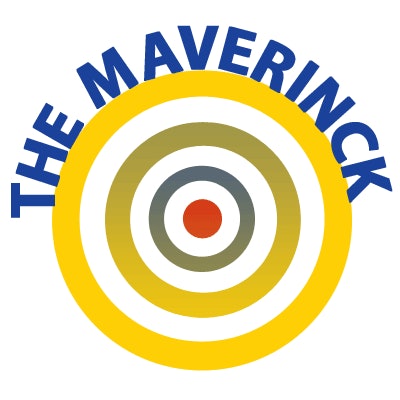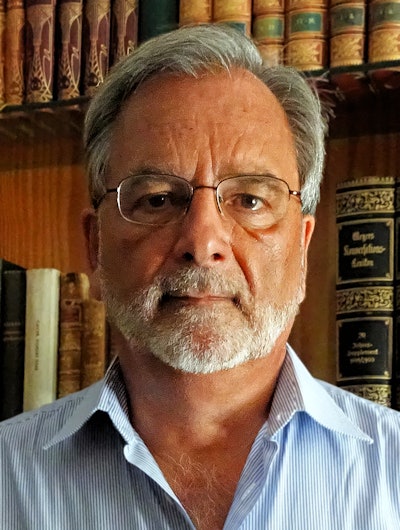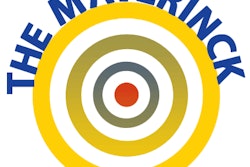
When COVID-19 struck, the force of circumstances led to unthought-of changes. It hit not only airlines and restaurants but also continuing education and training. Medical conferences are among the enterprises worst hit by the crisis.
The collateral damage was and will be enormous. The anxiety of people will reduce the number of conference attendants drastically. The risk of infection is high in the entrance hall, the corridors, and the auditoria. The narrow aisles of exhibition halls provide a perfect breeding ground for any kind of airborne infection.
 Dr. Peter Rinck, PhD, is a professor of radiology and magnetic resonance. He is the president of the Council of the Round Table Foundation and the chairman of the board of the Pro Academia Prize.
Dr. Peter Rinck, PhD, is a professor of radiology and magnetic resonance. He is the president of the Council of the Round Table Foundation and the chairman of the board of the Pro Academia Prize.For the first time in our lives, many of us have experienced draconian restrictions on our professional conduct and individual freedom in an open and thus roaming society. We have all had to do some rethinking, and for a number of people in the field, this rethinking process had to be extremely fast. Thousands of conferences have been called off as the pandemic worsened.
In the case of the European Congress of Radiology, the organizers' statement when canceling the onsite meeting mirrored this shock:
"The choice not to hold ECR 2020 onsite presents a significant burden for the European Society of Radiology and will also influence future congresses and endeavors..."
There is no fast remedy for that, and financial state support for conferences seems unlikely. When these conferences or trade fairs take place onsite again one day, they will look and feel different. The "Vienna experience" will probably change significantly for the time being.1
The switch to virtual meetings
The solution offered was immediate: go digital. But one cannot just suddenly arrange a conference online. It would be very hard to recreate the experience of a big meeting online -- it's a big step to go from e-teaching to e-congressing.
We know that e-teaching can be effective. But one misses the opportunity for direct communication and discussion with the lecturers and colleagues. People travel to attend a conference not just for the information but also to be around other people. The informal social contact often appears to be more important than the learned papers.2, 3
We have rushed into the age of video-sharing platforms such as Zoom and YouTube. After a number of weeks of lockdown, a weariness spread among home office workers: "Zoom fatigue." Looking at a screen hours after hours is exhausting and tiring. The quality of the transmission is sometimes poor, image and sound, bad. People sitting in front of a screen for more than three hours a day complain about problems with their eyes. Dryness, blurred vision, headache, sensitivity to light or premature tiredness lead to lack of concentration and increase the error rate.
It's feasible to switch from an onsite to an online meeting format and still meet most of the goals of a conventional medical conference, but to do so is challenging, as the European Society of Radiology (ESR) concedes:
"Many of the necessary techniques are well established. Recording and streaming of conference sessions for later on-demand viewing has been offered by some societies (including the ESR) for some years. Live webinars are common educational tools. However, a full congress is a more complex proposition, involving a variety of session types, aimed at diverse types of attendees, with many different forms of interaction between speakers and delegates."
Still, looking at the online conference schedule for ECR 2020, participants are faced with an overladen program once again:
"The meeting will not only have a packed scientific and educational program ... but will also feature hundreds of abstract and poster presentations ... topped off with a virtual exhibition involving hundreds of industry partners. ESR Connect is set to host over 1,000 abstract and poster presentations, recorded and uploaded remotely by presenters from across the world ... Finally, ECR 2020 Online will also feature a virtual exhibition taking place on July 15-21. The interactive exhibition will host hundreds of companies, providing visitors with the opportunity to visit virtual booths, watch product demonstrations, and talk live with company representatives."
Prospects for success
The organizers' announcements talk in superlatives: The congress "still holds much of the same magic that onsite ECR's are already well-known for," and "ECR has always been known for its elegance, style, and love for detail."
There is a lot of complacency and smugness here. Still, one must admire the enormous amount of work done to readjust to the abrupt new situation, and the team in Vienna deserves to be congratulated. There is no guarantee of success, however.
This reminds me of a discussion with a publisher of medical journals and books. He stated that the publisher doesn't really publish for readers but for the authors because they need publications for their careers. The same holds for many congresses. For this purpose, the new YouTube style of presentations for a digital audience is perfect, although the citations of contributions will be difficult.
Over the years, ECR and ESR have gradually changed from a forum of professional exchange into a business. When a business model no longer works, you have to adapt it. However, in the end, there is not a single right way of doing this. It would be sad to see something like ECR, built up over decades, come to an unexpected end.
As a consequence of the pandemic, there might be a move to less global, more local patient-centered regional medicine. Hopefully one will see less research in new imaging hardware and software, and a return to patient care and impact studies of existing methods and applications. Medical imaging does not need permanent changes of systems and techniques. Medical imaging needs stability, reliably proven outcome of recent and novel techniques, and intelligent and well-trained physicians. We have the choice now.
Dr. Peter Rinck, PhD, is a professor of radiology and magnetic resonance and has a doctorate in medical history. He is the president of the Council of the Round Table Foundation (TRTF) and the chairman of the board of the Pro Academia Prize.
The comments and observations expressed herein do not necessarily reflect the opinions of AuntMinnieEurope.com, nor should they be construed as an endorsement or admonishment of any particular vendor, analyst, industry consultant, or consulting group.
References
1. Rinck PA. Congresses -- a feeling of uncertainty • (I) The case of ECR. Rinckside 2020; 31,4: 7-8. http://www.rinckside.org/Rinckside%20Columns/2020 07 ECR A Look Back.htm
2. Rinck PA. From ECR 2006: Drive for perfection has potential downside. Rinckside 2006; 17,1: 1-3. http://www.rinckside.org/Rinckside%20Columns/2006%2005%20ECR%20drive%20for%20perfection%20has%20downside.htm
3. Rinck PA. From ECR 2009: Walking down the corridors ... Rinckside 2009; 20,2: 3-4. http://www.rinckside.org/Rinckside%20Columns/2009%2003%20Walking%20down%20the%20corridors.htm



















